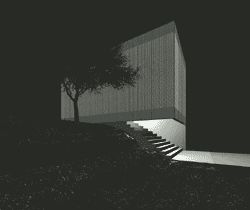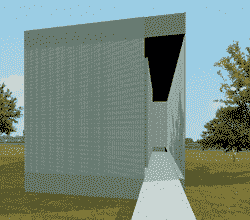Concrete Gets Glamorous in the 21st Century
Meanwhile, Bill Price, assistant professor of architecture at the University of Houston, has developed a similar translucent concrete, which currently exists only in a few prototypes but will go commercial when it's ready. In contrast to LiTraCon, Price's Pixel products use polymer and crushed glass to transmit light, rather than fiber optics. The effect is startling. His goal is to create not one product, but a series of translucent concrete products-panels, bricks, and blocks. (LiTraCon will only be available in blocks when it first launches.)
|
|||||
What makes Price different from other innovators is his approach to research and development. He's methodical-part academic, part rational practitioner, part lab rat. He began his investigation by rethinking the traditional ingredients of the material, initially as research and development director at the Office of Metropolitan Architecture, Rem Koolhaas's architecture firm in Rotterdam. "In 1998, I broke the research vector down into multiple directions. I took each ingredient associated with concrete and asked it to carry light," he explains. "The ingredients are binder/additives, reinforcement, aggregate, and formwork." He took each component and either altered it or replaced it with another. Iteration meets trial and error.











